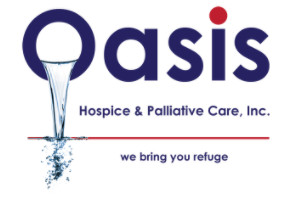Many individuals are unfamiliar with the process of death. Patients and their caregivers may be unsure about what to expect during this stage and how to make it more bearable. Understanding what happens throughout this process can assist everyone involved in better preparing for this transition and each stage of death.
There are three main stages of dying.
The early stage, the middle stage, and the final stage are the three stages of death. Various alterations in responsiveness and functionality characterize them. It’s crucial to remember, though, that the timing of each stage, as well as the symptoms encountered, might differ from person to person. The following is a broad overview of what to expect at each step.
Early in the Dying Process
A patient in the early stages of dying will eat and drink significantly less. This time frame can range from a few days to a few weeks.
What You’ll Notice
A notable loss in interest in food will be the first indicator of this stage of death. At this point, eating becomes more of a chore than a pleasure for many individuals. They may also choke on their fluids on occasion, and they will soon become full.
What Is Actually Going On
During this stage, the body begins to conserve energy and does not require as much nutrition as it did previously. Although it is distressing to observe, the patient is not in any pain or suffering. Artificial feeding at this time does not prevent death and can even cause bodily suffering, as this is a normal process in which the body shuts down appetite.
Loved ones can comfort patients by offering bites of food, sips of drinks, or ice chips, but it’s crucial to respect the patient’s eating and drinking preferences.
Dying in the Middle Stages
Changes in the patient’s physical appearance can last a few hours or several days throughout the middle stage of dying.
You’ll Notice These Signs
The person will become progressively unresponsive to their surroundings and others around them, finally losing their ability to speak or move at all. This is most common in the latter days of life.
What Happens in Stage 2?
Blood is conserved for assisting key internal organs operate as the body’s circulation slows. Hands and feet of the patient may become chilly and darker in appearance.
As the patient’s circulation changes, loved ones can offer blankets to help them feel more comfortable. Heating pads and electric blankets, on the other hand, are not recommended because the patient will not be able to tell if they are growing too hot.
The body’s physical and spiritual response to the process of dying is detachment from their environment and relationships, and it is totally acceptable.
Family members should presume that the patient is listening to whatever they say. Experts recommend speaking quietly to the patient and gently touching them only if they are used to being touched. This is an excellent moment to pray or meditate. It is not a good idea to ask the patient any questions that need to be answered.
Dying’s Final Stage
Disorientation and restlessness will increase as you near the end of your life. The patient’s breathing and continence will be significantly altered.
What You Will Discover
The patient’s bowel movements may become infrequent or cease entirely. As death approaches, their respiration may become shallow and erratic, with extended pauses that become more frequent. In the last few hours, there may have been noises of chest tightness and throat rattling.
What Their Bodies Are Trying to Tell Us
Changes in metabolism are to blame for this stage’s restlessness, while decreased circulation has an impact on renal and bowel functions. Incontinence can result from relaxing muscles. The lungs lose their ability to discharge fluids when blood circulation to internal organs slows, as does the relaxation of the throat muscles.
When a patient is nearing the end of their life, it is beneficial to speak with them in a reassuring manner. If the patient enjoys being touched, light touch is appropriate. Even though they are not responding, the patient may be able to hear what is going on around them, so speak gently. Although it may be difficult for loved ones to remain calm during this difficult time, it is best to do so.
Some individuals may require restlessness medication, diapers, a catheter, or under body pads our hospice care agency provides all of these. Giving oxygen isn’t going to help at this stage. However, elevating the head of the patient’s bed or using cushions to help lift their head may be beneficial; turning the patient on their side may also be beneficial.

